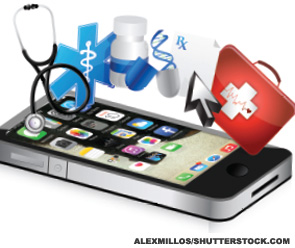
With gusto, Apple’s senior vice president of software engineering, Craig Federighi, unveiled HealthKit over the summer at the company’s Worldwide Developers Conference. It’s the computer giant’s fierce foray into the healthcare realm, with bold visions of patients and doctors being connected basically with the tap of a screen and speedy healthcare delivered without even the need to set foot in a clinic.
The number of healthcare apps on the iPhone is vast, but because the information gathered by those apps—miles walked, blood pressures, glucose levels, pain levels—aren’t in sync, the utility of them is greatly diminished, goes Apple’s thinking.
“Up to now, the information gathered by those applications lives in silos—you can’t get a single comprehensive picture of your health situation. But now you can—with HealthKit,” Federighi dramatically proclaimed on a San Francisco stage.
Mayo Clinic has collaborated with Apple, and that could mean a more intimate link between physician and patient than ever before, Federighi suggested. If a patient takes his blood pressure at home, he said, HealthKit would tell the Mayo health app, which could tell whether the reading was within the patient’s acceptable range.
“If not, it can contact the hospital proactively, notify a doctor, and that doctor can reach back to that patient, providing more timely care,” he said.
How could the app help with rheumatology? With patients with rheumatologic conditions requiring regular monitoring, the platform could potentially be a big boost, but how it plays out remains to be seen.
Even at Mayo, implementation hasn’t gotten down to the individual division level, a spokesman said.
Integrating Mayo Clinic Data
The newest development is the release of Mayo’s updated app, which—by way of HealthKit—works together with Apple’s “Health” app, allowing users to see their Mayo Clinic data from office exams alongside fitness and nutrition data stored in Health.
Paul Limburg, MD, a physician in the Division of Gastroenterology and Hepatology at Mayo and the medical director of Mayo Clinic Global Business Solutions, describes the collaboration with Apple as an obvious route in order to tap into Mayo’s expertise for the greatest effect.
Mayo sees 1.2 million patients a year across its campuses, but could improve care for far more people, Dr. Limburg says.
With patients with rheumatologic conditions requiring regular monitoring, the platform could potentially be a big boost, but how it plays out remains to be seen.
“Our ambitious goal is to reach out to hundreds of millions of people to try to address their health and wellness needs where they are, when we may be of most benefit,” he says. “Working with Apple to be able to scale that Mayo Clinic knowledge—which we would consider our core asset—is really a fantastic opportunity. It extends our ability to deliver high-quality affordable health information, health guidance and healthcare to everyone.”
